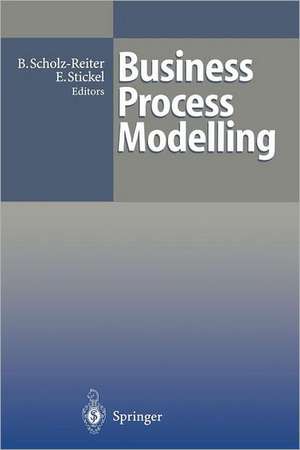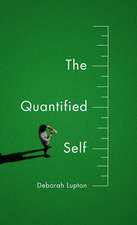Business Process Modelling
Editat de Bernd Scholz-Reiter, Eberhard Stickelen Limba Engleză Paperback – 7 dec 2011
Preț: 947.04 lei
Preț vechi: 1154.93 lei
-18% Nou
Puncte Express: 1421
Preț estimativ în valută:
181.21€ • 197.46$ • 152.70£
181.21€ • 197.46$ • 152.70£
Carte tipărită la comandă
Livrare economică 23 aprilie-07 mai
Preluare comenzi: 021 569.72.76
Specificații
ISBN-13: 9783642803192
ISBN-10: 3642803199
Pagini: 348
Ilustrații: XI, 332 p.
Dimensiuni: 155 x 235 x 18 mm
Greutate: 0.49 kg
Ediția:Softcover reprint of the original 1st ed. 1996
Editura: Springer Berlin, Heidelberg
Colecția Springer
Locul publicării:Berlin, Heidelberg, Germany
ISBN-10: 3642803199
Pagini: 348
Ilustrații: XI, 332 p.
Dimensiuni: 155 x 235 x 18 mm
Greutate: 0.49 kg
Ediția:Softcover reprint of the original 1st ed. 1996
Editura: Springer Berlin, Heidelberg
Colecția Springer
Locul publicării:Berlin, Heidelberg, Germany
Public țintă
Professional/practitionerDescriere
Today information is considered to be a valuable company resource that has to be planned, coordinated and documented. Business processes need to be treated in the same way. Moreover, significant potential for improvement may lie in optimizing these processes. As a consequence information should be collected and suitably modelled and business processes need to be analyzed and redesigned. Business modelling usually deals with different views of a company. The data view is concerned with information structures, the functional view analyzes tasks and procedures, the process view links different functions by analyzing workflows and events triggering them, while the organizational view is concerned with the structure of the company under investigation. These views should not however be treated in an isolated manner. The key to success is to deal with the interaction between them. Hence, business modelling should provide an integrated view of all relevant informational, functional, organizational and workflow issues. One of the most significant problems results from the complexity of the modelling task. Modelling tools are required and are to be used in combination with other close methodologies and applications. Suitable generalizations and/or new methodologies need to be developed.
Cuprins
Business Process Modelling.- 1 Business Process Modelling and Workflow Management.- From Business Process Modelling to Workflow Management: An Integrated Approach.- Workflow Management Cycle - An Integrated Approach to the Modelling, Execution, and Monitoring of Workflow-Based Processes.- Process Modelling and Execution in Workflow Management Systems by Event- Driven Versioning.- Scheduling Models for Workflow Management.- to Business Process Management Systems Concepts.- 2 Business Process Modelling and Engineering Processes.- Implementation of Information Systems Supporting Engineering Processes Based on World Wide Web.- Business Process Management for Open Processes: Method and Tool to Support Product Development Processes.- Distributed Co-operative Modelling of Production Systems.- 3 Strategic Business Planning.- A Proposal Approach for Strategic Probe: A Scanning Information Support.- Integrating the Strategic and Technical Approach to Business Process Engineering.- 4 Business Process Modelling - Experiences.- Information Technology as an Enabler of Business Processes Designing During Macroeconomic Transformation.- Integration of IT Strategy, Process Analysis and System Implementation in an Office Automation Based Process Improvement Programme.- 5 Methodological and Technical Aspects of Business Process Modelling.- A Coordination-based Approach for Modelling Office Workflow.- An Object Oriented Approach to Business Process Modelling.- Business Process Reengineering with Reusable Reference Process Building Blocks.- An Object-Oriented and Business Process-Based Meta Model of an Architecture for Management Support Systems.- It’s Time to Engineer Re-engineering: Investigating the Potential of Simulation Modelling for Business Process Redesign.














